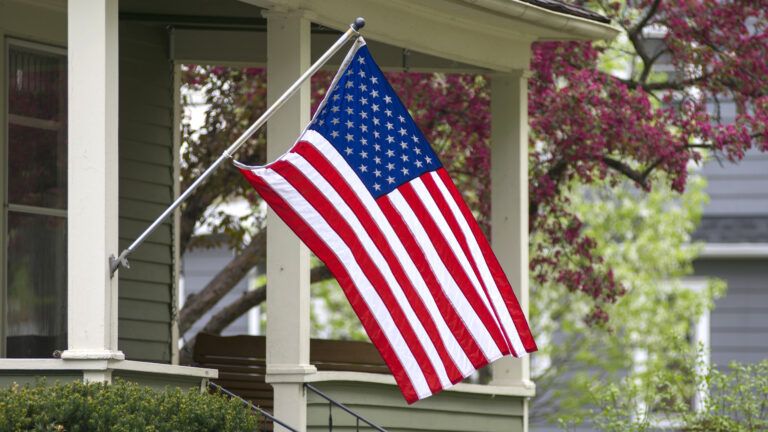I did a double take when I read the name: U.S.S. General Harry Taylor. The ship was mentioned in a story by David Fison in the December 2000 Guideposts called An Order I Couldn’t Refuse. Fison had sailed aboard the Navy transport during World War II. So had I.
Some of the happiest moments of my life were on that old ship, yet I hadn’t thought of her in years. Where was she now?
I first trudged up her gangplank in Marseilles, France, with my Army outfit, the 303rd Signal Operations Battalion, on August 7, 1945, to take part in the planned invasion of Japan.
Bring faith and inspiration to our troops! To donate a Guideposts subscription now, click here.
More than 3,400 soldiers from various outfits crowded the ship, all of us sweating under the South Atlantic sun as we chipped paint, checked bilges and ran drills. At the end of the day we’d grumpily squeeze into our cramped three-tier bunks for another restless night at sea.
Five days out, we got word of reports that a strange and terrifying new bomb was dropped on Japan. The ship echoed with a single question: Would Japan surrender? The radio shack was so besieged that the overburdened operator posted a sign. “That’s enough! I’ll tell you.”
Finally came the news we’d all been waiting for. Japan Surrenders!
Cheers rang out, only to be followed by speculation. Now what? Months of occupation duty in Japan? How long before we set foot on American soil and saw our families again?
At 3:21 P.M., August 15, the captain’s voice boomed over the loudspeaker: “Attention all hands. Watch the shadows on the deck as our bow turns toward New York!”
Men who had snapped at each other minutes before bear-hugged, danced and stomped on the decks. The thunder of our feet made it seem like the Taylor was celebrating right along with us.
On August 18 the Taylor steamed into New York Harbor, the very first troop carrier to arrive after the war. Fireboats met us with plumes of water jetting skyward. An Army band on a tugboat churning alongside blared Sentimental Journey.
Pretty female news reporters (the male press corps was still not back from the war) came aboard looking for a quote and received jubilant greetings from men who’d almost forgotten what an American girl looked like.
Within a week of disembarking from the Taylor I met a girl named Betty, who would become my wife.
After reading David’s Guideposts article, I promised myself I’d find out what had become of the Taylor. I figured the ship had probably been scrapped years ago, like most World War II vessels. It seemed a shame.
In those days, she’d meant so much to me and my comrades. The good Lord had guided us through a dangerous journey and brought us home safe aboard that ship. For us, the Taylor had been our final answer to prayer.
I soon learned that I wasn’t the only one the old troop carrier was special to. Our editorial office received letters from a number of later passengers of the Taylor—refugees fleeing war-ravaged Europe and Communist tyrannies. I had them all forwarded to me.
Anna Klettner told of how she and her husband, Anton, had lost everything in their homeland of Hungary except their deep faith in God. In 1951 they, along with hundreds of other refugees, boarded the Taylor for the long voyage to America.
Mrs. Klettner was only 23 at the time, same as I was when on the Taylor. She’d spent much of the 10-day voyage caring for children of seasick mothers. The same sleeping berths we’d griped about she’d found “very nice.”
We also heard from Elsa Jaster in Swartz Creek, Michigan, who boarded the Taylor on her eleventh birthday, May 13, 1952, along with her parents, sister and grandmother, all Polish refugees. “When I saw the story, it made me cry. I have wonderful memories of that ship,” Elsa wrote.
She recalled how the sailors set up a playroom for the kids and often brought them oranges and other treats. “God protected us through the war and led us every step of the way to America and a wonderful life.”
It turned out the Harry Taylor had made some 30 such transatlantic humanitarian voyages in the years after the war.
And then we got a letter from Joe Weatherby. He knew exactly what had become of the Harry Taylor.
Joe told us that in 1963 the Taylor was recommissioned as the USAFS General Hoyt S. Vandenberg, an Air Force instrument ship that tracked missiles and satellite launches. Her last mission finally ended. She was mothballed on the James River in Virginia.
But that isn’t the end of her story.
Turns out Joe is the president of a nonprofit group called Artificial Reefs of the Keys, which towed the ship to a spot off the Florida Keys so she could be intentionally sunk to provide a habitat for countless marine species.
The 553-foot Taylor/Vandenberg became a world-class diving and research destination in 2009.
Like the Taylor, I’ve had many adventures since the war. Betty and I had two sons. I had a 33-year career at this magazine. Each May the people in my town gather on the green to recall those who gave their lives for our country.
This year I’ll also think of the Harry Taylor. God leads each of us on our own journey. It’s fitting that a ship that was a part of so many journeys had an amazing journey of her own—and that she lives on, just like the memories of all she carried.
Click here to donate gift subscriptions to Guideposts Military Subscription Program.






